|
Redolent of the old rivalry between mountain bikers and road cyclists and further back, the division amongst ‘road men’ and ‘testers’, eBikes and their riders seem to be causing some consternation amongst those who pedal unassisted. I was prompted to take a look at why this might be after a pretty hostile reaction from a friend of mine who said whilst he routinely acknowledges other cyclists he won’t, under any circumstances, acknowledge somebody on an eBike. To paraphrase and remove the fruitier language from his comments, he said ‘they say hello like we’re doing the same thing. We’re not doing the same thing, they’re different’. A recent poll showed that a significant proportion of cyclists were prepared to confess (albeit anonymously) to hating eBikes and the people who piloted them. Hate is a strong word and it means different things at different times but even so, it’s a telling comment. The figures show an increase in sales of eBikes of 63% during the 2019 to 2020 Covid years, reaching annual sales of 155,000 in the UK. 90% of these are hybrid/City bikes or eMTBs, the remainder being road or cargo bikes so there’s little doubt there is a proliferation of them. Indeed during my last trip to Mallorca in June, I reckon I saw more people on eBikes than on the normally aspirated ones. 'Moped - a pedal bicycle with a helper motor or a non-pedal bicycle with a motor...' OED The strength of emotional reaction does not apply to those who use eBikes as transport as they are seen as a legitimate way of getting to work without arriving in a sweaty tired mess. Part of this, I think, is that commuters and their bikes are not pretending to be something they’re not. They tend to carry racks and bags and the people riding them are wearing utilitarian clothing rather than striped down Lycra or full face helmets. They are not pretending to be something they are not. Increasingly, high end eBikes are designed to look like normal bikes so there is element of artifice and pretence. I guess that’s why the loaded term ‘cheating’ is used. People riding them aren’t cheating to win a race, but it looks like they’re cheating because they’ve bought their power, not worked for it. Being a cyclist is a strong identity and the greater the time served the stronger that identity will be. To ride a bike meaningfully takes hard won fitness, commitment and an element of suffering. This costs time, effort and sacrifice and consequently has a value that cannot and should not be bought and turned on at the push of a button. Social identity theory (Tajfel 1979) proposes the groups people belong to, social class, family, teams and the like, are a source of pride and self-esteem. People identify strongly with the characterises of their ‘in groups’ and have a very clear idea what an ‘out group’ looks like. The group will have strong common themes, a shared understanding of the ‘rules’ and membership will have to be earned and maintained. Herein lies the problem, it looks like not only are eBikers trying to buy membership of a group without paying their dues, but they are also disguising their intentions by making their mopeds look like bicycles. They’re frauds and cuckoos and therefore should be cast out of the group. Conversely, eBikers are most likely not trying to be part of any group and are just doing their thing. However, this has never stopped a hefty dose of resentment and suspicion amongst ‘in groupers’ in any walk of life who see those unlike them as a threat. Isn’t human psychology a wonderful thing? 'Bicycle - a road vehicle with two wheels that you ride by pushing the pedals with your feet...' OED I am cognisant of the ‘cycling is for everybody’ theme and I’m aware breeching it risks a social media pile on of biblical proportions but the truth is, cycling isn’t open to everyone. The barriers to entry are high and varied and include (but are not limited to) the intersection of sex, ability, age, class, race and culture. Arguably these are all irrelevant when it comes to identifying as a cyclist because, for me at least, the principle defining characteristic is a willingness and desire to apply physical effort – to try hard. Do this on a bike and, irrespective of all other characteristics, you’re in. You're a cyclist. Rich Smith rode an eBike once and has never forgiven himself. He is a British Cycling qualified Level 3 coach and has coached the Great Britain Transplant Cycling team for over 10 years. He spent 30 years responding badly to people in authority in senior roles for Barclays, HSBC, British Waterways and National Grid Property before launching RideFast Coaching in 2015 which is much more fun.
0 Comments
How to get fitter, faster and Fiesta: Revising the components of fitness for endurance riders5/15/2023 The human body is a fiendishly complicated thing. Test this out by asking a doctor why humans get tired during exercise, or why they age and die. Actually don’t, they’ll blow a gasket. So, with this medical irreverence in mind, here’s a different take on the Components of Fitness, those things we need to focus on to get faster and fitter, using the analogy of a crappy Ford Fiesta I had as a kid. Alloy muscles I found out to my cost that putting wide alloy wheels on a 1 litre Fiesta does not make it faster. The same applies to muscles on a cyclist. Independently building bigger muscles is unlikely to make endurance riders faster without improving the other supporting systems. If a lack of muscle strength in the legs is a limiting factor because of illness or injury, gym work may help but it has to be the right kind of exercise at the right weight because biceps curls don’t cut it – unless big biceps are needed to go with the alloy wheels. There are some limited circumstances where strength work might correlate with increased performance. Track sprinters use nothing but muscle power so they spend a lot of time in the gym and there is some weak evidence to suggest squatting can improve power in elite endurance athletes (link here) but, by and large, strength training does not translate directly to increased cycling performance. There are numerous reasons why cyclists, particularly older riders should go to the gym, bone density, resilience against injury, flexibility and mental health among them but on its own, it’s not a magic bullet for riding faster. However, there are reasons to suggest it may translate to riding for longer and feeling happier. Unnecessary weight Taking the back seats out of a Ford Fiesta will make it faster – or at least it’ll make it accelerate faster and burn less fuel maintaining speed. Similarly, power to weight is an unavoidably important component for endurance cyclists. Being dispassionate about weight and avoiding linking it with self-worth or body image is a tough ask for humans, particularly those involved in sports with an aesthetic element and, like it or not, cycling does have that. To be clear, if a rider is at a happy, healthy weight losing it is not indicated. But excess weight, particularly in the form of excess fat, is likely to affect performance in terms of speed and endurance. However, there is a balance. A 100kg rider on a skeleton evolved to carry 75kgs is going to slow things down but at 76kgs the extra kilo isn’t really going to make much difference unless it’s in elite competition. How much it matters is a value judgement depending on the goals of the individual. Whilst weight should be controllable and arguably the simplest component to adjust if necessary, it is fiendishly difficult in practice. Bloody fuel Blood is a component of fitness that doesn’t get much profile in training articles but blood volume and the concentration of red blood cells are vital components for endurance athletes. Volume will increase with training but haemoglobin and haematocrit are, for all intents and purposes, a genetic predisposition and unalterable without dabbling in the dark arts. However efficient the cardio vascular system is, it still relies on getting a high volume of oxygen rich blood to the muscles. As long as the diet is fairly healthy to start with, altering it won’t make any difference to blood chemistry or consistency. I would go as far to say that blood is the limiting performance factor for most which is why elite endurance athletes have to be careful who they select as parents – it’s in the genes. The reason the first couple of training sessions or rides after a break feel grim is usually down to a reduction in blood volume rather than a permanent loss of fitness. It comes back quickly. As any would-be boy racer knows, putting high octane fuel or nitrous oxide in a Fiesta will make it faster but only temporarily, then if detection by the authorities is avoided, it will blow up and die. The same happens to athletes who tamper with their blood. Car - Diovascular system Broadly, the heart, lungs, blood vessels, capillaries and anything connected with the machinery that moves blood to the muscles. Extending the Fiesta metaphor to breaking point, the aim is a well maintained engine capable of processing the air and fuel and moving out the waste products efficiently. This is meat and drink of endurance exercise and the main focus of a training prescription specifying how long, how hard and how often training should occur. The cardiovascular system is one of the more trainable components on the list and, rightly, the one that gets the most attention. Critically, training needs to be at the right intensity, duration and frequency to optimise the effect because, treated carefully and with attention, it’s where performance gains are made. The by-product of training the cardiovascular system on the bike is that is comes with cycling specific muscular development, blood volume recruitment and weight regulation. A rider with a high performance engine would do well to take great care of it to ensure it carries on performing well for a long time and should not trust it to AI or algorithms. Brain power There was no engine management chip in the Fiesta, just the driver operating the pedals and steering wheel to take control and tell it what to do. Now, there are Fiesta shaped holes in hedges around here that will attest to this not always being a perfect process but the machine is not to blame for that. Cars don’t need purpose but humans do. From purpose comes the ability to direct energy into the things that gives us satisfaction, fulfilment and enjoyment. It allows us to set goals to motivate us to train with intent and, when necessary, fall back on resilience and commitment to get us through tough patches. I would argue the two components that separate the elite from the average are blood and brain. There’s nothing to be done about blood but getting the mind in the right place is something that’s available to all of us. Even if is machinery is Fiesta-like you can still optimise its performance and quickly drag it out of the metaphorical hedge when it gets miss directed. Rich Smith still drives a Fiesta with wide wheels. He is a British Cycling qualified Level 3 coach and has coached the Great Britain Transplant Cycling team for over 10 years. He spent 30 years responding badly to people in authority in senior roles for Barclays, HSBC, British Waterways and National Grid Property before launching RideFast Coaching in 2015 which is much more fun.
The prevailing assumption for many years was riders trained to compete in races. Without race focused goals, it wasn’t training, it was just going for bike rides. Competition meant being viscerally compared to other riders by showing up on a start line in the same place and the same time and seeing who got over the finish line first. One rider wins, the rest get placed in relation to the winner. There were, and are, categories that increase the options to race against a competitive cohort based on age, ability/disability, sex and the like but more recently, opportunities to compete on terms of our own choosing have greatly expanded. People can compete in the (relative) comfort of their garage with a link to Zwift. Riders still have to start at the same time, but they don’t have to be in the same place. Conversely, competition on Strava means riders can compete over the same course but at different times and, with the segmentation of routes, the number of available courses has increased exponentially. It’s even possible to compete by riding a segment more regularly than others and to create segments if it’s not possible to find one that suits. These mini competitions are further age and sex categorised. With this in mind, perhaps we need to change our thinking about competition, training and racing? It’s not necessary to show up on a start line to compete Comparison is an essential element of competition and there are now more options to do this on terms defined by the rider. It’s now possible to choose when and how competition happens and even who the other competitors are, this is not something previously available and means not only are the opportunities to compete are exapnded but also they can be shaped to suit by the individual. The barriers to traditional racing formats are high, insurmountable to many, if competition in its expanded format motivates a rider, it opens up a world of opportunities for competition and meaningful training. If you don’t race, structured training remains valid More and more riders are benefiting from structured training – or at least fitting an element of structure training into their riding. The technology available means putting aside a couple of hours a week to train to numbers reaps huge athletic improvements. A power meter and a heart rate monitor remove the guess work and provides empirical evidence on the effectiveness of training. It means a level of enhanced fitness can be maintained to be taken advantage of when opportunities arise – a tour, sportive, group ride or an attempt at a PR on Strava. If engagement in the expanded world of competitive options provides a focus for structured training and motivates a rider to improve, surely that’s a good thing? Training that isn’t goal focused doesn’t relegate it to ‘just riding’ Lots of cyclists ride for ‘fun’, but most enjoy the experience of pushing hard sometimes, to hammer up a hill and feel the blood flowing. If they weren’t doing this on a bike, it’s probable they would find another outlet for exercise. For many, training is part of life and valid in its own right, not just as a means to an end. If engagement with an online social network based on exercise is part of this, it’s likely part of the fun involves an element of competition or comparison within a supportive community. Consequently, if engagement helps adherence to a training program or encourages more regular riding, this is a positive. There is a value judgement about whether the societal movement from analogue to virtual is a good thing or not but one positive is that it opens up opportunities to engage with a community of people for whom training is an essential part of their life. Using the digital world to enhance engagement in a very real physical activity like cycling is an attractive concept and there’s fun to be had out of competition where some of the parameters of that competition are user determined. The best way of ensuring training isn’t a chore is to give it value and meaning, expanding how we frame ‘competition’ is an important part of this. Mind how you go… Rich Smith has nearly completed his degree in psychology and, damn, doesn't it show... He is a British Cycling qualified Level 3 coach and has coached the Great Britain Transplant Cycling team for over 10 years. He spent 30 years responding badly to people in authority in senior roles for Barclays, HSBC, British Waterways and National Grid Property before launching RideFast Coaching in 2015 which is much more fun.
The question comes up every year, often every year at this time of year: should cyclists be going to the gym and, if so, what should they be doing when they get there? Helpfully, the body of actual peer reviewed evidence (Levin et al, 2009, Ronnestad et al, 2015) as opposed to ‘bro science’, is growing and gives some empirical guidance as to what works best. So, my answer to the gym question is yes, and this… 1. Do gym stuff in the gym, bike stuff on the bike – don’t try to replicate the bike in the gym and vice versa. High repetitions of light weights on the legs won’t help cadence, just the same as over geared efforts on the bike won’t build strength. Not only are these types of exercise ineffective, they both risk injury. Fundamentally, go to the gym to get strong. 2. Combine the gym with cycling training – the right kind of gym work will build strength useful for cycling but it won’t build aerobic capacity or increase VO2 max. Carefully fit strength work around training on the bike over winter to get the real benefits of both. Adequate recovery is important. 3. Do the right exercises – Whilst attempting to replicate cadence in the gym is pointless, there are some exercises that are more applicable than others for cyclists. Parallel or back squats (they’re the same thing), overhead squats and deadlifts are the primary exercises that relate directly to cycling. There are many variations on these themes but I’d argue these are the best ones to focus on first. Do these correctly and build in variety later if necessary. 4. Lift heavy – Something like 3 to 5 sets of 3 to 5 repetitions in each set using the compound exercises described above is probably optimal. Certainly, repetitions of more than 10 per set would be excessive in my view. 5. Get taught how to do it – Form, the technique to do exercises safely, is important to avoid injury and get the maximum benefit from them. Get somebody properly qualified to teach them and set a progressive program designed specifically for you. 6. Give it time - 8 to 12 weeks of strength training twice a week is probably optimal. Those brand new to the gym might want to consider some circuit type training using free weights to build up some basic strength and stability before moving on to compound exercises. 7. Weight & bulk gain – These exercises won’t increase bulk or weight. Nobody builds bulk or muscle by accident. Indeed, those fully focused on getting ‘buff’ struggle without erm… ‘help’. Muscle tone and definition are far more likely (and potentially more welcome) side effects. 8. Timing - Off season November through to end of March is probably optimal. Heavy lifting should be phased out for racers with a move to a more maintenance focused regime as the season approaches. 9. Equipment – shorts and a T shirt are enough. Belts, gloves, wrist straps. chalk etc are not necessary. Perhaps the only item of specialised clothing needed are flat, hard soled shoes if the aim is to squat and deadlift heavier weights (the cool kids are wearing Converse All Stars or similar). Spongy running trainers don’t provide enough support. 10. Psychological & physical benefits – The positive impact of aerobic exercise on mental health is well rehearsed, what is perhaps less well known is that strength training is even more effective (O’Conner et all, 2010). Additionally, gym work will likely improve quality of life, prevent injury, improve mobility, flexibility and range of motion along with a myriad of metabolic and hormonal benefits. For veteran riders, it’s particularly important physically because it helps increase bone density. Arguably this is even more important for women than men. 11. Bonus tip! – You are NEVER too old to start strength training. Arguably the benefits to the more mature rider are even greater than those to the young - it will keep you riding faster for longer. Enjoy! And get in touch if you need more. Rich Smith did the UK Strength & Conditioning Foundation Course and has never looked back. He has coached the Great Britain Transplant Cycling team for over 10 years, is a British Cycling qualified Level 3 coach and a final year psychology student. He spent 30 years responding badly to people in authority in senior roles for Barclays, HSBC, British Waterways and National Grid Property before launching RideFast Coaching in 2015 which is much more fun. At the confluence of the contemporary world and the pre-historic sits the power meter and the human brain. A device that gives an accurate empirical measurement of how hard a cyclist is pushing the pedals allied with a 200,000 year old evolutionary alarm mechanism wired to warn of a sabre-toothed tiger attack. How can these potentially contradictory bedfellows be reconciled when it comes to training and racing on a bike? In the 21st Century, the power meter coupled with a heart rate monitor, provides all the data needed to ensure physiological training is specified at the right intensity and duration. Heart rate supplies the input metric; how hard a rider is trying measured in beats per minute, and the power meter reports the results of all that effort measured in watts. This, occasionally brutal, data has revolutionised training and largely consigned cumbersome VO2 max and lactate threshold tests to history. In the, admittedly unlikely, scenario of escaping a sabre-toothed tiger attack on a bicycle the data would likely show a heart rate going from the 80bpm to 200bpm and power going from 0w to 1200w then rolling back to 400w or so over 45 seconds. After that the unfortunate pre-historic rider would slow down pretty quickly. If the tiger produced better performance data, it would soon be picking bits of Lycra out of its teeth. The ancient part of human brain is well suited to the hunter gatherer existence of our evolutionary past but much less so to modern life. More relevantly for cyclists, it doesn’t like to expend energy when it’s not being chased by a tiger or under immediate threat. This burns precious calories and waste resources that could aid reproduction and survival. The brain’s limbic system controls the fight, flight or freeze response and becomes activated during exercise. It gets quite excited during moderate activity but maximal efforts without an immediate threat to life and the limbic system suggests, in no uncertain terms, the body knocks it off and helps itself to another slice of mammoth. This is why amphetamine use was rife in cycling for so long. It doesn’t alter the physiology; it blocks the signals from the brain and inhibits the automatic ‘kill switch’. The physiological consequences of consistently over revving a human engine are damaging at best and at worst, deadly. The only way the limbic system can be legally and safely challenged is by deploying the pre-frontal cortex, the part of the brain that controls executive functions and rational thought, to persuade it of the need to press on in the absence of life threatening circumstances. This is tricky because the pre-frontal cortex is a relative newcomer in evolutionary terms, it’s much weaker and acts much slower than the fight or flight response. Coupled with this, the power meter now indicates what we should be capable of irrespective of how it feels. The ability to manage this mental paradox effectively, to think clearly, calmly and rationally under stress, is one of the characteristics that separates exceptional athletes from the very good ones. Encouragingly, it is a learned skill and improving the ability to do it can have a positive effect on the sporting performance of anybody. In fact, the impact on amateur athletes may be proportionally greater because of an absence of previous exposure to mental coaching or sports psychology. How these techniques are learned and actualised has been framed in numerous ways depending upon which luminary is trying to flog a book at any particular time but the principles have merit. If we are to perform to the absolute best of our ability, we should take the time to work on the management chip. It matters to cyclists especially because we are often faced with empirical data from a power meter telling us we should be able to push harder but can’t or that we should be slowing down but don’t want to. There are generic sports psychology tools but with the real time performance data produced by a power meter, they require some adaption to the make them more useful for cyclists training with data. Goal setting Goal setting is sports psychology 1.0 and with good reason. In order to train consistently with purpose and intent, a clear focus on why you are training is essential. The persuasive emotional part of the brain may not want to ride on wet a Sunday morning so a meaningful goal is needed to allow the pre-frontal management centre to drive the right behaviour at a point of potential failure. The SMART acronym is well known (Specific, Measurable, Achievable, Relevant and Timebound) and any useable goal should try to contain these elements. However, an extra ‘M’ for meaningful could be helpfully added as the tendency towards measurability often overrides the imperative of relevance to the individual. Target culture is a modern malaise in business and sport, the making goals easily measurable whilst side-lining what is actually important drives the wrong behaviours. For example, using a power meter, an FTP target can be easily made to tick all the SMART boxes. It is simply measurable but may not be motivational in its own right. Power goals represent a hard target and it is tempting to view hitting or missing them as a binary pass or fail – if a training session or race isn’t within the power parameters it should be, does that mean it is aborted? Is a session a failure because the efforts are not in zone? The emotional brain might suggest so because it tends to catastrophise, but sometimes the real benefit may come from trying as hard as possible irrespective of the metrics. For an individual training session or race, the numbers on the screen can demotivate at the point of 'failure' when engagement with rational and positive thought around meaningful goals could ensure it is completed as best as possible before it is evaluated. Take away: Establish meaningful goals, ones you can look towards when things get tough. Visualisation This is using the mind’s eye to create a mental picture to rehearse a technique, skill or event aimed at enhancing performance in competition or training. The brain likes pictures so mental imagery is potentially powerful and often works best with repeated technical skills rather than physiological effort. Chris Hoy managed to combine both. He is in the exceptional category and a great example of how mental discipline can separate the great from the good. Getting the right imagery and being able to deploy it at the right time takes time, knowledge and practice. It’s worth experimenting to see what might work for you. It’s not a quick fix but properly guided and shaped works well for those prepared to invest the time. When sitting safely on the turbo trainer doing threshold or high Z4 efforts I sometimes draw an image of guiding a sprinter through a bunch towards the finish of a race. I find focusing on the mental image generates a feeling of responsibility mixed with excitement and away from the discomfort of maintaining a long, hard effort. If I ignore the power meter, I often find I’ve completed the efforts at or over parameters when reviewing the data. I coach a rider who, amongst other things, conjures up the image of checked board towards the last section of a time trial. Most people will have imagery that can be drawn from memories and experiences and used as a potentially powerful motivator, it may be worth thinking about yours. Take away: Try ignoring the numbers and experiment with visualization, have a look at the data afterwards Self-talk This is defined as verbalization or statements athletes repeat to themselves prior to or during skill or effort execution. Left unaddressed, the internal ‘mind’s voice’ can manifest in the emotional brain talking an athlete out of doing something that involves what it interprets as unnecessary effort or risk. Once again, engaging the brain’s control mechanism to deliver some unspoken verbal reasoning to suggest whilst what is being asked of the body may be difficult, the intention is to pursue it nonetheless. By necessity this is likely to be delivered by a meaningful and powerful mantra of a few words rather than a reasoned argument over a nice cup of coffee if it involves intense physical effort. Self-talk may help to address some particular challenges with real time heart rate and power data during training and racing. If an FTP is set accurately and HR settings are current, a rider should know how hard and how long a certain effort level can be sustained for. During tough training sessions or races, particularly time trials, there’s often a miss match. Most commonly, power is below the level you should be at and/or HR above it. There can be a tendency to catastrophise (this is rubbish, I’m rubbish, my equipment is rubbish, I might as well pack this in etc) resulting in a less than effective training session or a sub optimal race result. It may be worth examining your thoughts and feelings at the point of things not going to plan and look for a simple, positive mantra could motivate you to press on, as best as possible, from that point. However, do bear in mind there are just as many explanations about why a great result is a fluke and a one off as why as rider has suddenly become ‘rubbish’ off the back of one less than glowing race result. What you tell yourself at perceived points of failure and success can be important both for that instant and for the future. Take away: Press on! Measure, evaluate and learn afterwards. Arousal control Arousal is defined as the level of physical and psychological activation, on a scale from deep sleep to intense excitement and how the feelings or effects of this may be moderated to control anxiety or enhanced to improve performance. The effects can be somatic (elevated HR, sweaty palms, muscle tension) or cognitive (anxiety) or, most commonly, a combination of both. The more pressure there is on achieving a particular result or performance, the higher the level of arousal is likely to be and therefore the ability to control it becomes proportionately more significant at or approaching important events. Obvious examples of these are the breathing techniques used by archers, shooters and golfers before taking a shot or the physical arousal of a weight lifter by hitting, slapping and shouting. Worthy of consideration for those who suffer from pre-race jitters and when clear thinking under competitive pressure is required like sprint finishes in bunch races. Interestingly, the brain chemistry involved in anxiety (generally perceived as unpleasant) and excitement (generally enjoyable) is the same, it’s how the brain interprets the situation that determines enjoyment or angst. Take away: Can anxiety be reframed as excitement to achieve more? Conclusion Effective mental focus is usually achieved through using a combination of the tools described here. The hierarchy tends to be based around having a meaningful goal and then using visualization and self-talk to focus and adjust arousal as necessary. It’s not simple but it is effective. The best performances are almost always achieved during racing or in a pressurised competitive environment. It’s hard, if not impossible, to train with the same intensity outside of competition and it's worth understanding why this is. The physiology of the rider is the same during training and racing, the muscles, the cardio vascular system and the blood hasn’t changed, only the perception of the environment. And perception is fully in the domain of the brain. Understanding this and being able to deploy a mental proxy of a competitive environment or to think clearly and positively under pressure, particularly in the face of real time performance data produced by a power meter, is a powerful aid to training and racing with purpose and intent. Take away: Don’t let the real time performance data inhibit exceptional performances when racing and don’t interpret one or two sessions with poor data as a failure of training. Embrace the data, it's vital, but don’t exclude the power of the mind, it’s what makes a difference between the exceptional and the ordinary. Rich Smith coaches UK and internationally based riders and has coached the Great Britain Transplant Cycling team for over 12 years. He is a British Cycling qualified Level 3 coach and a Psychology undergraduate with the Open University. He spent 30 years responding badly to people in authority in senior roles for Barclays, HSBC, British Waterways and National Grid Property before launching RideFast Coaching in 2015. That’s torn it, I’ve gone and said fat. The klaxons go off and everybody runs for cover because fat and cycling have been mentioned in the same breath. However, it doesn't hurt to have a dig around perceptions of appearance and performance in cycling. Humans are social animals and, like it or not, how we look and how we identify is important. We judge, and are judged, at least in part by our own perception of aesthetics. This is particularly true of cyclists where ‘skinny’ has been seen as interchangeable with ‘good’. How true is this? The way competitive cyclists should look is culturally ingrained and whilst preconceptions are being broken down, there remain unanswered questions about how weight, aesthetics aside, impacts performance. Body image is a sensitive topic. The social pressure to look a certain way or be a particular size is pervasive. It used to be a something that was thought to effect women way more than men but that perception is changing. Mainstream media, social media and advertisers have got a lot to answer for in cementing images of what purports to be ‘ideal’ because, in the process of making a great deal of money, they’ve caused a great deal of misery. In elite competitive environments the pressure to look a certain way can be intense, commonly in those sports that emphasise aesthetics like gymnastics, but also in endurance sports like triathlon, cycling, running where ‘thin’ is often seen as a prerequisite. It continues to lead to, amongst other horrible things, disordered eating and poor mental health. It is the cause of much angst and unhappiness. How you identify and whether you are comfortable with the way you look in regard to weight and body fat is very much a personal matter for you. However, like it or not, how you view yourself will be informed by what you think others think of you. It's uniquely human. My observations here are addressed at riders who are within a couple of standard deviations from the mean and not suffering from disordered eating, physical or mental illness. I’m not here to add to the misery. If you want to be a 120kg climber or a 55kg sprinter you can be. The 'type' of cyclist you want to be is what you chose to be, not what the power profiles tell you. I'm acutely aware that I bring my own cultural prejudices to the discussions so, for the purposes of self-disclosure, I self-identify as a tubby cyclist. I’m 180 centimetres (5’11) and weigh 76.5kgs (about 12 stone 2lbs) at the time of writing. This is pretty much as light as I get, and I’ve been over 80kgs (13 stone plus) in the last 2 years as you will see from the pictures. I routinely view myself as carrying more weight than I want and ideally, I’d like to be 73.2kgs (11.5 stone). This is an arbitrary figure and, as an adult I’ve only weighed this once and that was when I’d been in a coma for two weeks. Effective but wholly inconvenient. ‘...How did you win that you fat bastard...?’ Said by a Danish 'friend' after a race. Body Mass Index Calculated as Kg/m², the authorities say a healthy Body Mass Index (BMI) is 18.5 to 25 for an adult human. 25 to 30 represents overweight and 30 plus is obese. At 80kgs I would just, by the skin of my teeth fit in to ‘normal’ (BMI 24.7). At 76.5kgs I’m still on the high side of mid-point of normal at 23.6. Like many of us I’ve done the old ‘yeah but BMI is bollocks and I’ve got heavy bones and carry some muscle’ but it’s there or thereabouts as a measurement. The WHO and NHS are sticking with it so maybe we should too? As an aside, I was once criticised for describing myself as ‘a bit fat’ by somebody who was fatter than me but didn’t consider themselves to be a bit fat. Seemingly, I was oppressing them with my identity. I did say it was a sensitive subject. This guy doesn’t know what he’s talking about... I should say that I’m not a nutritionist, nor am I an exercise physiologist, I’m a cycling coach with an academic interest in psychology. However, I have been eating food all my life, I do exercise and have experience of being a bit fat. I’ve been coaching cyclists for over 10 years, mostly competitive amateur riders as well at the Great Britain Tx team. Although it’s not a specific question I ask when I gather data on riders, a comment about maintaining or more often losing weight invariably comes back. Like it or not, weight is important to cyclists so maybe giving the subject a wobble in the open is a healthy thing? Will losing weight make me faster? Depends. If you’re a 65kg elite racing cyclist with normal body fat almost certainly not, in fact losing weight will make no difference or might even make you slower, worse still, it might make you ill. However, if you’re, say, an 85kg or 95kg cyclist with frame designed to carry 75kg then yes, it almost certainly will. First, is it true that power to weight ratio is most critical when the terrain goes up. So, if you’re not riding or racing in the Alps, maybe weight doesn’t matter? Aligned with this it is often said when it comes to steady state endurance events, time trials in particular, that weigh doesn’t matter because once a mass is up to speed, maintaining it takes no extra effort. All true, but there’s no such thing as flat in cycling. We’re always going up or down which, in turn, means the mass (that’s us on a bike) is constantly being accelerated or decelerated – it’s the nature of turning the pedals and making the bike move forward. Think about racing a crit and the multiple efforts involved in accelerating out of dead corners to stay with a bunch. The news gets worse. A smaller rider is likely to present a more effective aero dynamic profile to overcome the resistance of forcing bike and rider through the air. Not only that, but fat carried around the belly, chest and arms can restrict a rider from getting into an optimal aero position – important to time trialists or those looking to get the most out of an aero road bike. I’ll make the point again, if you’re at a healthy weight, losing it will not make you faster. It risks making you not only slower but ill. And unhappy. In addition, if there is some 'excess' weight around but you're not racing, how much does weight really matter to you? It may be about body image than performance - both can be valid considerations. Conversely, if you’re carrying much more than your body frame should, it could well make you faster, more comfortable and improve your health. Can you use cycling to lose weight? Yes, any exercise with an aerobic component can help lose weight. Nutritionists, weight loss experts and physiologists will have a field day with this but, in order to lose weight, the body needs to be in calorie deficit, simply meaning more calories have to be expended than taken in. A heart rate monitor or, better still a power meter, gives a very accurate measure of energy used when riding. This is how the maths is supposed to work.
This is broad and the figures that apply to you will be unique, but in order to lose weight/fat, measuring what goes in and what goes out in calories is helpful. The one common denominator of ALL diets is that they aim to achieve calorie deficit. Fat myth busting
Why is it so difficult to lose weight? The maths is straightforward, achieve calorie deficit for a few weeks and, hey presto, a slimmer version appears. It makes one wonder why, according to the NHS the majority of adults in the UK are overweight and 25% of adults are obese, as are 20% of children aged 10-11. For many, trying to lose weight is a miserable failure or procession of miserable failures over time. It’s so hard because the human brain is stuck in our evolutionary hunter-gatherer past. Its 200,000 year old circuitry considers high calorific foods like fats and sugars, to be scarce so we are driven by powerful survival instincts to eat them. Not some of them, but all of them if nobody is looking. What’s more, even though we know food is instantly available and plentiful, we’ll eat it when not hungry because our ancient brain thinks it might be a while before it’s available again. Humans have an efficient storage system for calories not immediately required for survival – body fat. This efficient storage is matched by a process of miserly release, which is why riding a bike for an hour is worth less than a single chocolate muffin. Riding is hard, eating muffins is easy. Sweets, crisps and sausage rolls taste great, kale, broccoli and cabbage taste like grass. Ain’t evolution a bitch? Like saying maths is fun, there are those that say you can diet without feeling hungry. I don't think this is true. It takes a great deal of willpower, motivation and commitment to lose weight sustainably and then keep it off. Those of us who eat mindlessly for entertainment might not actually be ‘hungry’ when we consume calories, but we eat anyway. The diet and weight loss industry would like us to believe weight loss leads to ultimate happiness and spend millions on advertising to convince us being slimmer is the answer to all our problems. The industry is currently worth £2bn a year in the UK alone much of it made from those who have tried to lose weight multiple times before and are looking for a more 'palatable' solution. For what’s it’s worth, I’ve found it helps to keep a food diary and to get familiar with what foods contains what calories. I weigh myself no more once a week at the same time on the same day. I try to stick at it and try not to lie too much on the diary – mine makes Lord of the Rings look factual. I’ve achieved partial and temporary success in managing my weight but the struggle is real and on going. '...if you reckon you're so good, how come you're, you know, a bit fat innit?'... my old boss It’s about WHAT you eat, not how much. Yes and no. The human body has evolved into an efficient multi fuel engine. It can survive on very little food for a long time even if the food is crap. If the daily calorie consumption is made up entirely of Cola and chocolate it won’t be great but it’ll stumble along for a long time before something horrible happens. However, the age old advice of sticking to a healthy balanced diet including protein, carbohydrates and good fats still holds true for us cyclists. Leafy greens, colourful fruit and veg, lean meat, good quality food that is minimally processed, low in refined sugar and not mucked about with too much is best. I think most of us know what we should be eating by now, implementation is often the downfall. Alcohol is a fitness and training killer, nutrition free calories that break down it to acetate in the body – only handy for cleaning white boards with. My poison of choice is refined sugar. I can eat sweets like a kid and, of course, if I don’t burn off the excess glycogen it creates, it is gratefully received by the fat storage system around my middle. Damn my 200,000 year old brain. Am I eating enough? A body holds between 1600 and 2000kcal of readily usable glycogen in the muscles and liver. At the 500kcal per hour Z2 estimate, that’s enough for 3-4 hours without having to top it up. Anybody who has hit the wall (it used to be called ‘bonking’ in the old days) will know how unpleasant it is to run out of glycogen. Dizziness, narrowing of focus and barely enough energy to turn the pedals. Of course, at Z2, fat is also being burned as an energy source along with carbohydrate (praise the Lord). However, to avoid running out of glycogen for a ride of 3 or more hours, start taking on carbohydrate well before this this time, probably no later than after the first hour of riding. Carb drinks and gels work well but bear in mind the body cannot physically absorb more than 60 to 80 grams of carbohydrate per hour (that equates to 240 to 400kcals per hour), take in more than this and you’ll just excrete it if you’re lucky or store it as fat if you’re not. My preference is for small bits of solid food, nutty bars, bananas, sometimes a proprietary energy bar. If you’re trying to lose a few pounds, a 4 – 6 hours training per week is unlikely to indicate increased calorie consumption, at 6 – 12 hours per week it will and 12+ hours per week it will require more food and probably calorific supplements. Longer training weeks (12 hours plus) tend to be the preserve of professional riders and ultra-distance athletes. As a point of reference, during a Tour de France stage, a rider will burn between 6000 and 8000kcals. It’s hard, if not impossible, to eat this amount so whilst their rides include consumption of whole foods where possible, they are supplemented with gels, bar, drinks, and the like. Even so they are starting out at a body fat figure of, say 8%, and can end up at at sub 4%. That’s probably as unhealthy as the 25% body fat average of the non-cycling fraternity. If you go for a calorie deficit of more than 500kcals per day (on average) you risk starving your body of the fuel it needs to burn fat – it’s counterproductive to losing weight AND to your training. At best you’ll feel tired, irritable and constantly hungry and may struggle to sleep. Without sufficient calories the body shuts down the systems it can do without (for example, normal periods for women) as the metabolism slows to survival mode. Any food it does get is likely to be stored as fat rather than made available for exercise. At its sinister end, this can be a starting point for disordered eating and RED-S (Relative Energy Deficiency in Sport). This is an awful place to be and can lead to diagnosable mental illnesses. Don’t skip meals and don’t starve yourself! Conclusion Phew, well done for sticking with that. It might raise as many questions as it answers but I’d be fascinated to hear of your experiences and perception about weight and cycling if you’re willing to share them. Thanks for listening. Next, the Middle East crisis… Rich Smith, an inveterate eater of sherbet lemons, coaches UK and internationally based riders and has coached the Great Britain Transplant Cycling team for over 12 years. He is a British Cycling qualified Level 3 coach and a final year psychology student. He spent 30 years responding badly to people in authority in senior roles for Barclays, HSBC, British Waterways and National Grid Property before launching RideFast Coaching in 2015.
I have the privilege of coaching the Great Britain Transplant Cycling Team: The most exclusive cycling team in the world that nobody actually wants to be a member of. You see membership is free, but to qualify you need to have had a life supporting organ transplant. The riders you see above comprise a mix of heart, kidney, liver and bone marrow transplant recipients, none of whom would be alive without organ donation and transplantation. There's over 100 years of extra life in this picture alone. After a Covid-19 induced break of over two years, we managed to put the band back together for some skills training at the Stourport cycling circuit last Saturday. 'We are the only group of cyclists who face a lifetime ban from competition if we test negative for drugs...' Since our last major competition at the World Transplant games in Newcastle 2019, the team, like the rest of the world, has had to cope with the Covid-19 induced hiatus. Additionally, as all the riders (and their coach) are immunosuppressed, we’ve had to have a stab at some form of shielding too, meaning the group events that are so vital to keeping team recruitment and momentum up have been impossible. Also, In the immediate aftermath of a very successful games in 2019 the team sadly lost Simon Batch and Tim Jenkins, two of our younger riders who had both achieved medal winning performances at world level, to aggressive forms of cancer. We had not come together since the loss of these lovey guys. Tim and Simon were great friends and great rivals on the bike, and are much missed by the team. There is much talk of ‘skills fade’ in the coaching community - a lack of competition and events over lockdowns leading to some rather hairy moments on the recommencement of group training and racing. Honestly, I was more concerned about my coaching skills fading as I’d not delivered this type of coaching session for over two years. Fundamentally, coaching in this context is about trying to impart some useful information whilst keeping everybody safe. Happy and warm helps too but those are optional extras! Skill levels vary in any group but these guys dropped back into ‘thru and off’ very quickly and confidence levels came up rapidly. We did some shoulder to shoulder riding and did a ‘stop box’ competition as our 2 hours came to a close. It was great to see the two less experienced riders in the group came up to speed very quickly, mainly because the other seven made it so easy for them to see what good form looks like. Riders learn more from watching each other than they do from a coach but don't tell anybody: it's a coaching secret. Their ability to do this so quickly is testament to the quality of riders in the team as much as the talent of the newcomers. Classy bunch. In common with the real world, Planet Transplant has seen our significant competitions cancelled or delayed due to the zombie apocalypse. Notably, the 2020 European games (Ireland) and British Games (Coventry) and the 2021 World Games in the USA were canned. We are now targeting the 2022 British and European games (Leeds and Oxford respectively) and the World Games in Perth (Australia) in 2023. Much as biblical rain was followed by beautiful sunshine on our Saturday at Stourport, we look forward to next season's competitions with hope and optimism. So, I have some favours to ask...
Rich Smith's sorry ass was saved by an emergency liver transplant in Feb 1993 and he's been banging on about it ever since. He coaches UK and internationally based riders and has coached the Great Britain Transplant Cycling team for over 12 years. He is a British Cycling qualified Level 3 coach and a final year psychology student. He spent 30 years responding badly to people in authority in senior roles for Barclays, HSBC, British Waterways and National Grid Property before launching RideFast Coaching in 2015. I was fortunate to get the first two weeks in October over in Mallorca. It’s work (of course) but as it involves cycling, it’s a pleasure too. During the pandemic, trips to cycling paradise have been limited although when I was there in September 2020 and June 2021 it was so quiet it was like walking into an empty football stadium. The roads that are usually so busy with riders at peak times were pretty much deserted, the cafes closed or empty. Lovely in some ways but eerie in others and it was certainly not lost on me how much the local businesses were suffering. What a change this October! It felt like there was 18 months of missed cycling and holidaying being crammed into a few short weeks of decent weather. Puerto Pollenca saw the resident retired pro cycling expat community return and it was nice to bump into Sean Kelly in the mountains. A fully fledged and unfailingly lovely legend. For me the trip combined meeting clients and riders (new, old and prospective) and catching up with some old friends. Getting some easy base miles in in the sun before the UK based turbo trainer comes out was very welcome indeed. Thanks must go to Ottilie at OQ Service Course for hosting RideFast Coaching at her shop in Puerto Pollenca once again! I tended to stay away from the ‘monument’ rides – Formentor and Sa Calobra and the like – they are beautiful but I’m fortunate to have done them before (and I’ll do them again for sure) but there are a wealth of little known lanes to explore that show a slightly different side to the island. Also, I seem to have inadvertently mislaid my FTP at the end of August so something a bit gentler reflected my current aerobic status… During the pandemic, organisers in Mallorca, in common with pretty much everywhere else in the world, pushed events back into October so, during my 2 week stay there was the Mallorca Masters race (3 stages), the European Masters (I day), two Ironman events (a full length one and a 70.3) based in Alcudia and two ‘Challenge’ events of the same length on the same day from starting from Palma. The weekend of 23/24th October sees the delayed 312 take place. Like I said, it was properly busy. So, other than me crowing about getting a Mallorca trip on expenses, what's the point in this blather? Good question. Well, subject to a successful end to the Zombie apocalypse.
Whether you get to train aboard or not, November is probably as late as you can leave it and still have a successful season in 2022. Get in touch here if you want to get your winter training structured and effective. Remember, you win your medals in the winter, you just go to collect them in the summer. Rich Smith was once, harshly in his opinion, accused of doing nothing more than 'swanning around' in Mallorca by his ex partner. He coaches UK and internationally based riders and has coached the Great Britain Transplant Cycling team for over 12 years. He is a British Cycling qualified Level 3 coach and a final year psychology student. He spent 30 years responding badly to people in authority in senior roles for Barclays, HSBC, British Waterways and National Grid Property before launching RideFast Coaching in 2015.
Transitions - not the triathlon type ones characterized by hoping around on one foot trying to put running shoes on, but transition in the sense that the autumnal equinox sees us lose available light signifying the drawing to a close of evening rides leaving only a smattering of weekend events. It can leave us in a bit of a training quandary. There's no calendar to give us structure but it’s too early to start winter training. My default – and anecdotally this seems to be shared by some others – is to look back over the achievements of the season whilst peeling the wrapper off a box of delux chocolate biscuits. The next thing you know, it’s Christmas and my feet have disappeared. So, if you find yourself quandrified and in danger of slipping into a chocolatey abyss, here’s a few ideas. Have a break – Training and racing is physiologically and psychologically taxing so it’s definitely worth considering taking a break from the bike. If you force yourself to ride when you really don’t want to you it risks damaging enjoyment and motivation. It’s in the nature of endurance athletes to feel guilty when not training, not moving forward, but rest is a critical part of the process. The need to recover mentally as well as physically, is vastly underplayed – there’s a long winter ahead and to make the most out of it training needs to be approached with intent and purpose. Regenerating a bit of desire to train is no bad thing. If (like me) you think 'drifting' is a danger, or the concept of a break seems unconscionable, set a date for the break to end. That way, you're more likely to enjoy the break safe in the knowledge you have committed to recommence training at a fixed point. Looking forward to a re-start of training with enthusiasm is a powerful mindset. Cyclocross and track - Of course, racing does continue over winter should you wish to pursue it and there are weekly opportunities to indulge. The cyclocross season start earlier these days – often September – and viral apocalypses aside, indoor racing at velodromes abounds (3 nights a week at Manchester for example). Just check in with yourself that it is something that you actually want to do (rather than feel obliged to do) and that it fits in with your seasonal objectives. A change can be as good as a rest, but the change, I'd suggest, needs to be well considered. Strength & conditioning - It's hard to find evidence that going to the gym makes you faster on the bike - track sprinters, BMXers & increasingly team pursuit riders aside – but strong muscles work better, burn more calories and are less prone to injury. Also, importantly for older athletes and women, weight bearing exercise is good for bone density, as a low impact sport this is one of the few things that cycling doesn't help with. Training with weights is great for mental health too. It has been established that moderate aerobic exercise is at least as effective as anti-depressant medication for mood enhancement, this is only trumped by evidence that weight bearing resistance exercise is even more effective in improving outcomes for those suffering low mood and depression. If you’re fancying giving this a go, drop me a line because there are some cycling specific exercises that may help. Bicep curls isn't one of them. Learn a new skill - It's entirely possible you've heard enough about 'new skills' over lockdown so, on the assumption your sour dough bread is already on point, I’ve got some good resources (that’s code for ‘videos’) on getting started on rollers – great for variety and introducing abject terror into training sessions. Also, maybe worth looking at a taster session at a velodrome? If you’ve never ridden a fixed wheel bike on a velodrome before it’s a valuable skill to acquire – as well as being great fun, it will improve bike handling skills no end. Well worth the investment. And there's always pottery of course... Sort your plan and goals for 2022 – if you’re suffering with the curse of the endurance athlete - the combined feeling of dread, guilt, impatience and fear that you’re not doing enough exercise - settling on a structure and date for the recommencement of training can be just what the head doctor ordered. It can give the mind a little space to relax. If you’re struggling with setting SMART goals, here’s to a link to some helpful hints and information about how vital they are. Alternatively, here’s to a link to a blog telling you what a waste of time they are. Take your pick. If you’re starting to plan what winter 21/22 might look like for you, get in touch. It's a vital period and will go along way to determining your performance parameters for the 2022 season. Whilst September and October are often transitional – a time when structure is not at a premium – I reckon you’ll need to be starting winter training proper at the beginning of November. Rich Smith, an inveterate eater of chocolate biscuits, coaches UK and internationally based riders and has coached the Great Britain Transplant Cycling team for over 12 years. He is a British Cycling qualified Level 3 coach and a final year psychology student. He spent 30 years responding badly to people in authority in senior roles for Barclays, HSBC, British Waterways and National Grid Property before launching RideFast Coaching in 2015. Many of you will be familiar with the process of goal setting. If you’ve eaten the corporate shit sandwich for a living at any point, you’ll be no stranger to the annual ritual of mitigating the preposterous demands executive management puts on you to deliver implausible targets a year hence. As an aside, during my corporate years a colleague once submitted his inner most business related desires as (a) doing as little work as possible whilst securing maximum personal return and (b) doing away with his earthly body and evolving into a pure form of energy. His efforts where, regretfully, deemed ‘unacceptable’ by the body corporate and he was asked to re-think. Whilst hopelessly misguided and career limiting, I'd suggest his goals were at least honest and meaningful. Of significantly more importance to us here are goals relating to our cycling performance rather than an outside shot at pecuniary gain from the world of commerce. Goal setting is sports psychology 1.0. Out of the four tools regularly deployed by sports psychologists, it’s the one that gets drilled into aspiring coaches before we are let loose on riders. I guess it’s become a bit trite or old hat. Even triter if you conjure up the SMART (Specific, Measurable, Achievable, Relevant and Time-bound) acronym, but without doubt the riders who I coach who’ve done best through the Covid experience are the ones who've set meaningful goals. By ‘best’ I mean they’ve managed to remain committed to consistent training. By ‘meaningful’ I mean the goal has real relevance to them. The key to kick-ass goal setting is not whether they are ultimately achieved – if you ‘smash’ all your goals then they’re too easy – but whether they are sufficiently meaningful to keep you training when times get tough. Hitting 4w/kg at FTP by 4th Feb 2022 is beautifully SMART but probably not smart enough to get you out of bed on a wet Sunday in December to do 4 hours in the rain. Alternatively, you may find visualizing gliding up the Tourmalet next summer with the sun glinting off your well-honed tanned calves is more likely to rouse you from your slumber. Whilst it doesn’t have the SMART credentials of a power to weight target, a goal such as this is capable of being made SMART enough to satisfy the textbooks. More importantly, if it’s genuinely meaningful for you, it’s more likely to keep you on plan when transitory motivation dips. Of course, everybody is different, and one man’s Tourmalet heaven is another man’s vision of hell on wheels, so pick goals that mean something to you, not just your coach or ones that fit conveniently into the SMART shaped box. ‘Wait a minute’ I hear you say. ‘You’re not interested in helping me achieve my goals, just keeping me training you crafty bastard’. To which I’d say, ‘Easy Tiger, keeping you motivated to train with purpose and intent is the way to get you to your goals, not just this year, but for years to come as you get fitter and faster’. The right goal gives meaning to all the hard work so you train with intent and purpose rather than just going through the motions – simply, it makes training more effective and that's what ultimately makes you faster. We are living in uncertain times and the timing of events change. The temptation is to set goals that cannot be impacted by external events such as, I dunno, viral pandemics perhaps, but I don’t believe we should do this at the expense of making a goal less meaningful. Dates change, events get cancelled, but training plans can flex to accommodate changes. The meaningfulness of a goal should always trump it’s measurability in my book. Goal setting represents an investment in your athletic future and demonstrates confidence and optimism about your ability to improve. This self-belief sits beside oxygen and carbohydrates as a vital training ingredient. Set your goals with this in mind. So, with light still in the sky and events running, it might seem a little early to start thinking about next season but meaningful goals take a little time to come together, you might dismiss a few before you settle on what will keep you motivated and committed over the coming months. However, don’t be tempted to do away with your earthly body. You’re going to need that. If I can help, get in touch here. Rich Smith coaches UK and international riders and has coached the Great Britain Transplant Cycling team for over 10 years. He is a British Cycling qualified Level 3 coach and a final year psychology student. He spent 30 years failing to meet meaningless corporate targets and responding badly to people in authority in senior roles for Barclays, HSBC, British Waterways and National Grid Property before launching RideFast Coaching.
|
AuthorThe ramblings of a cycling coach... Archives
March 2024
Categories |
|
© COPYRIGHT 2022. ALL RIGHTS RESERVED.
|
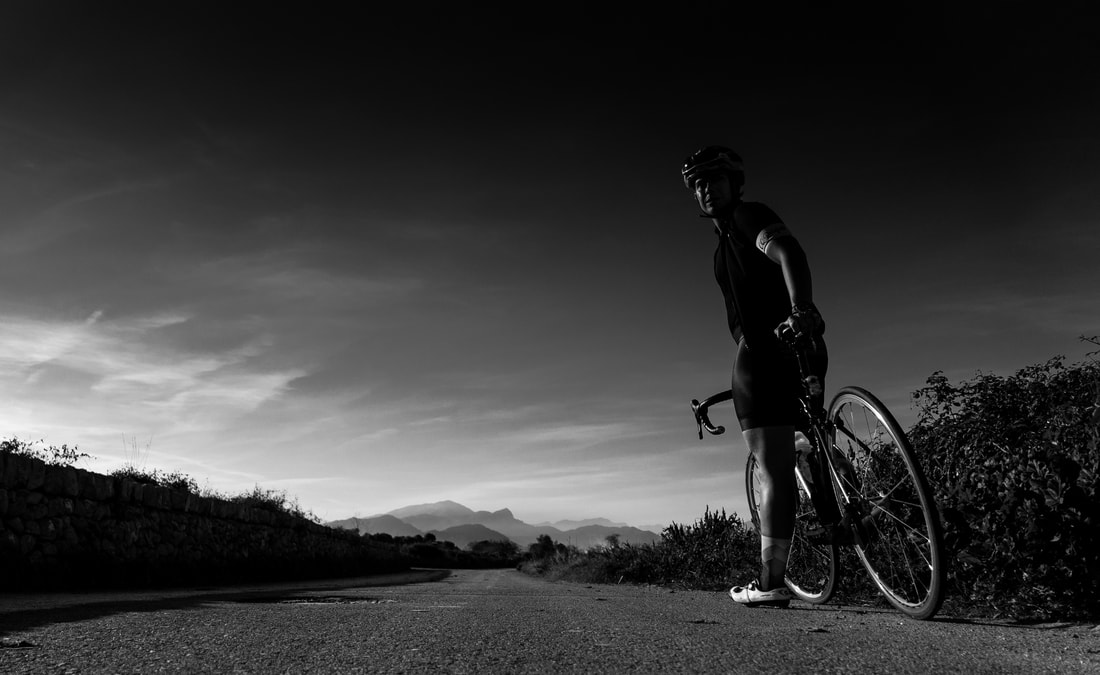

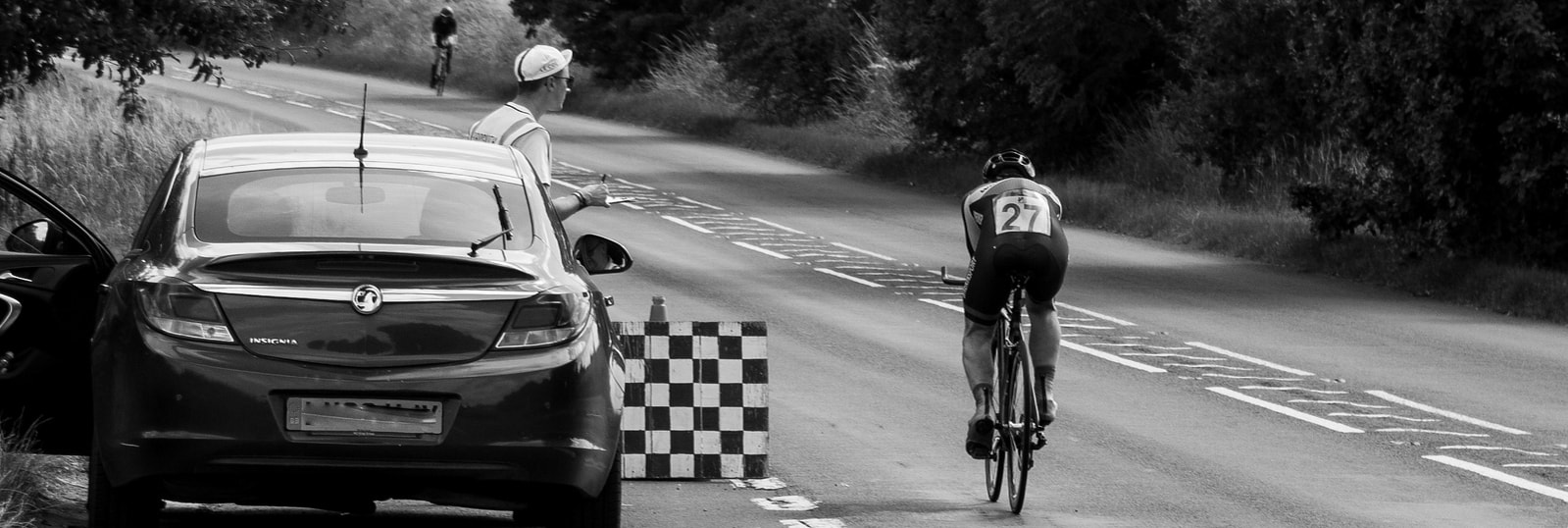



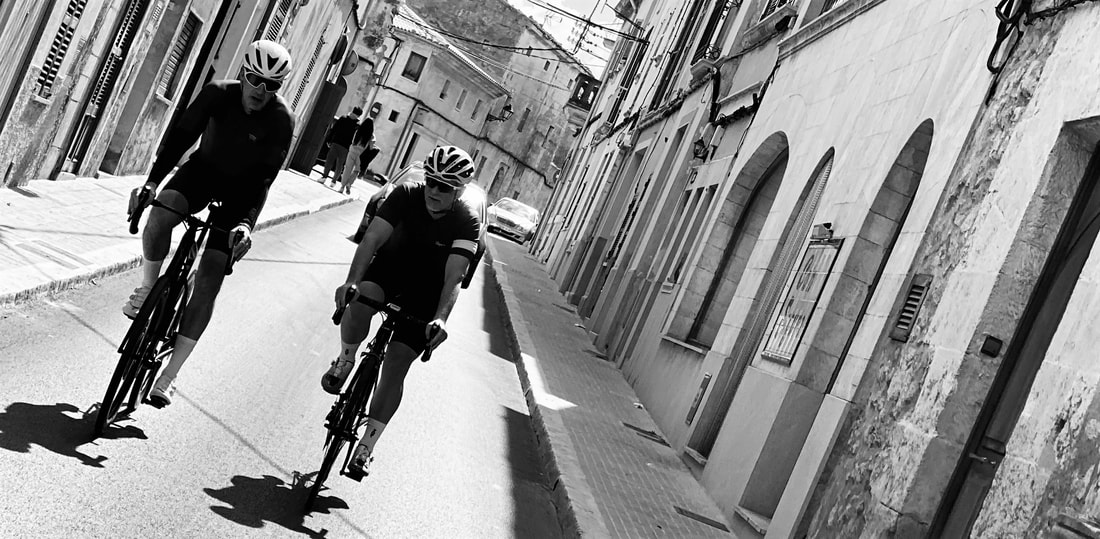


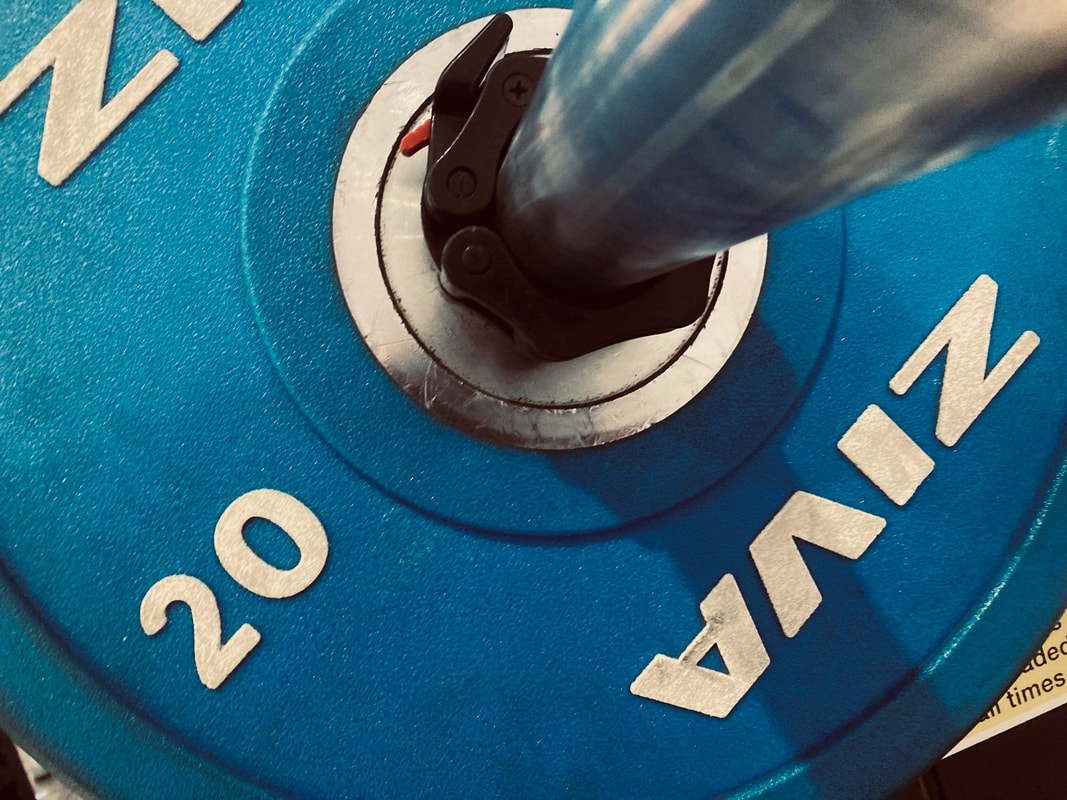
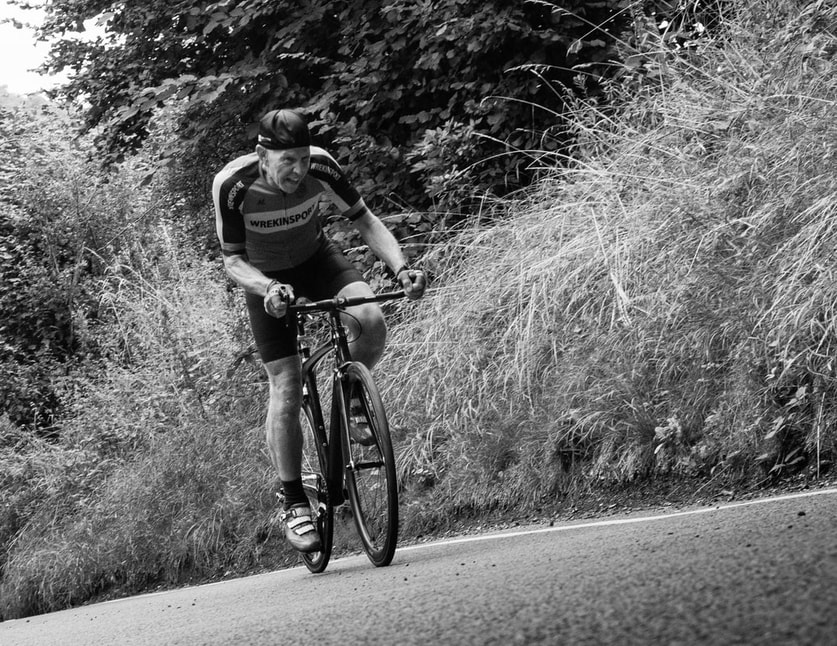


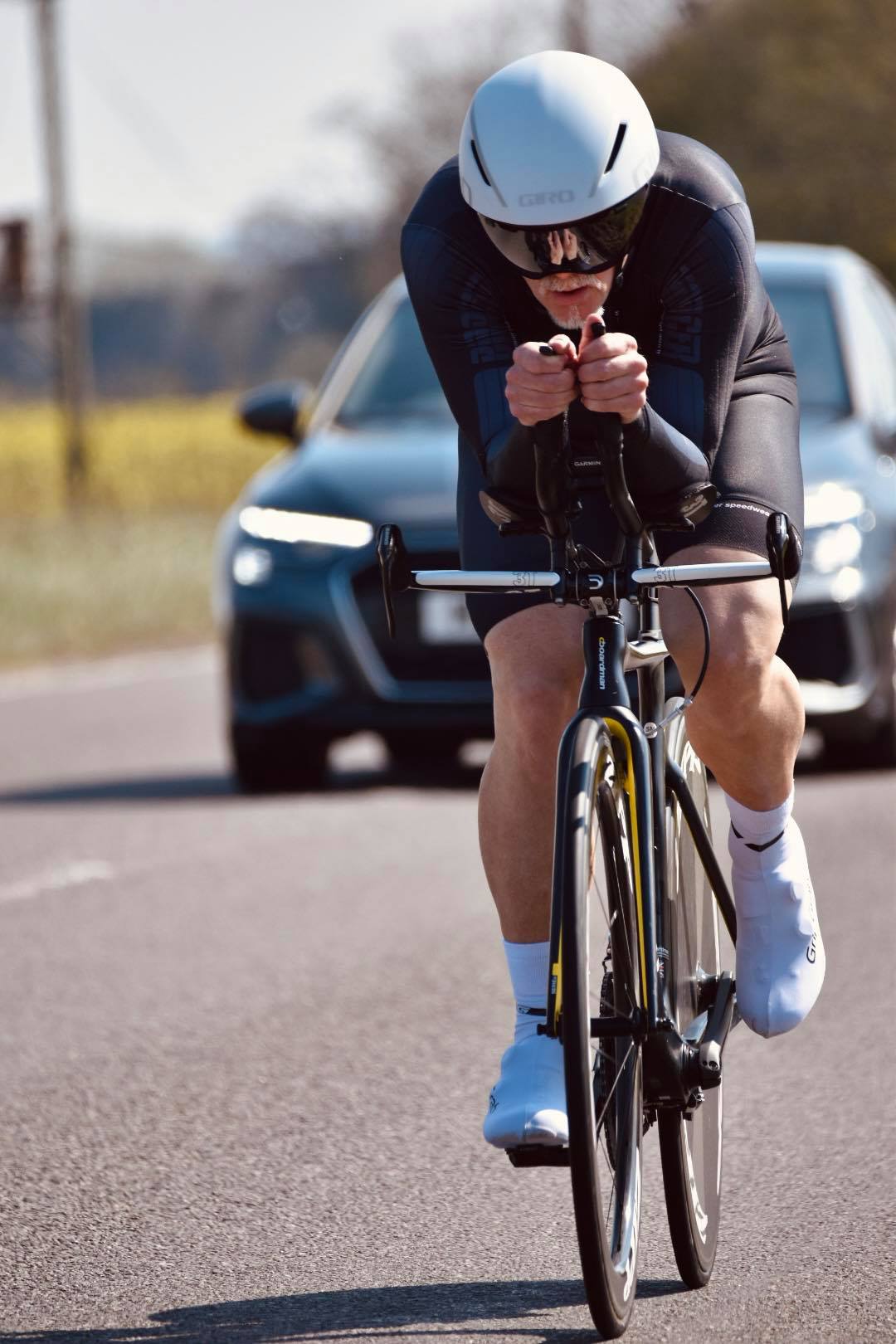

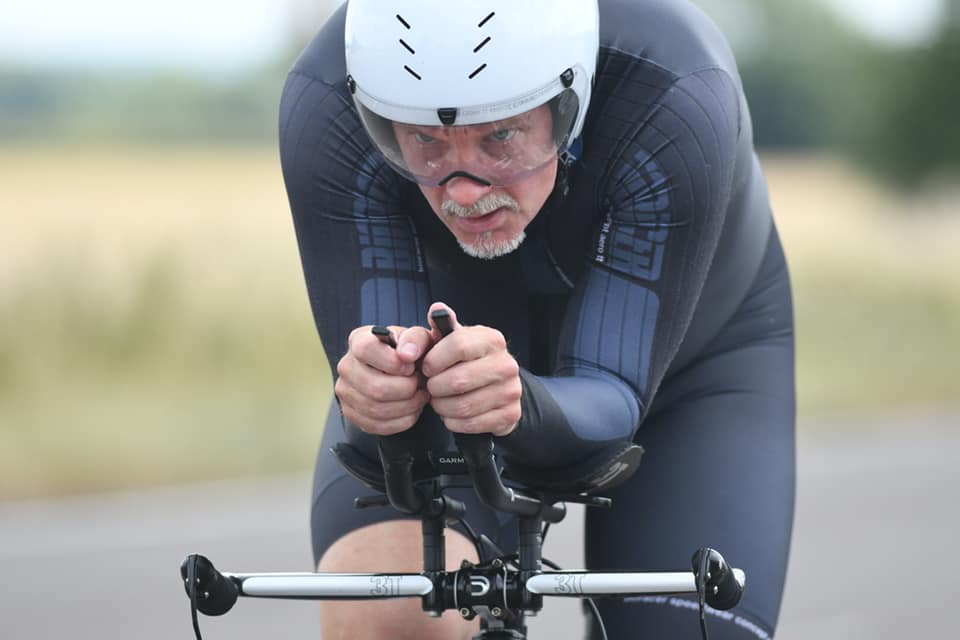
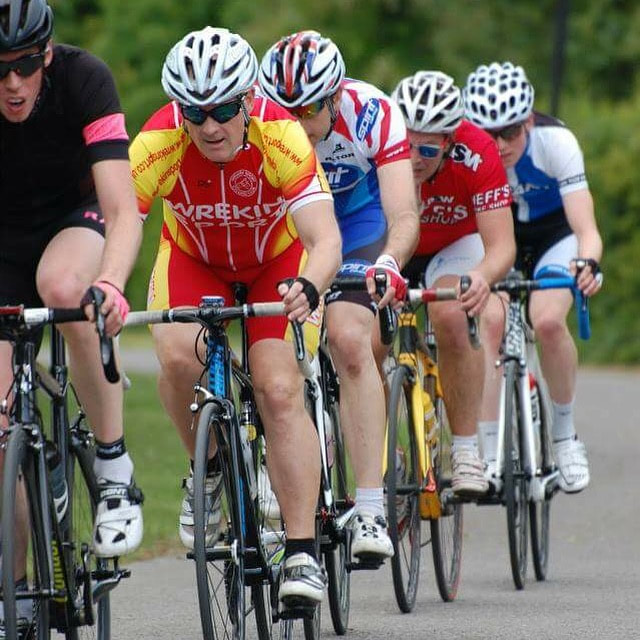
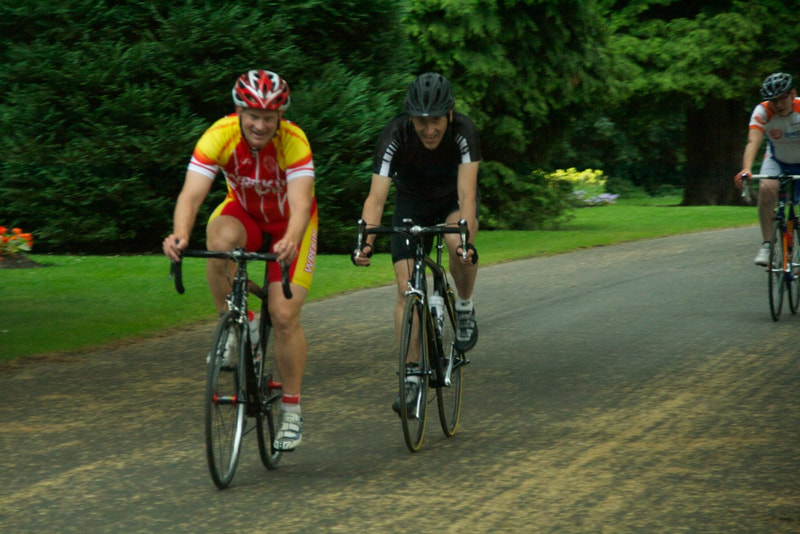
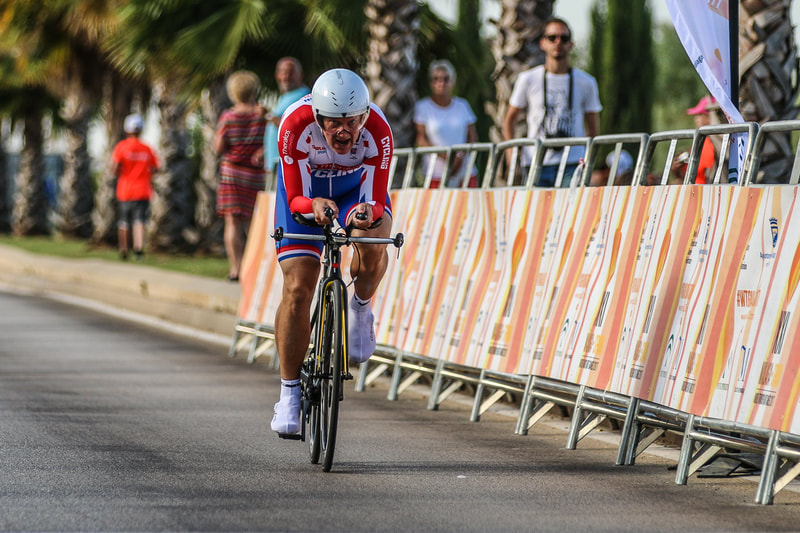
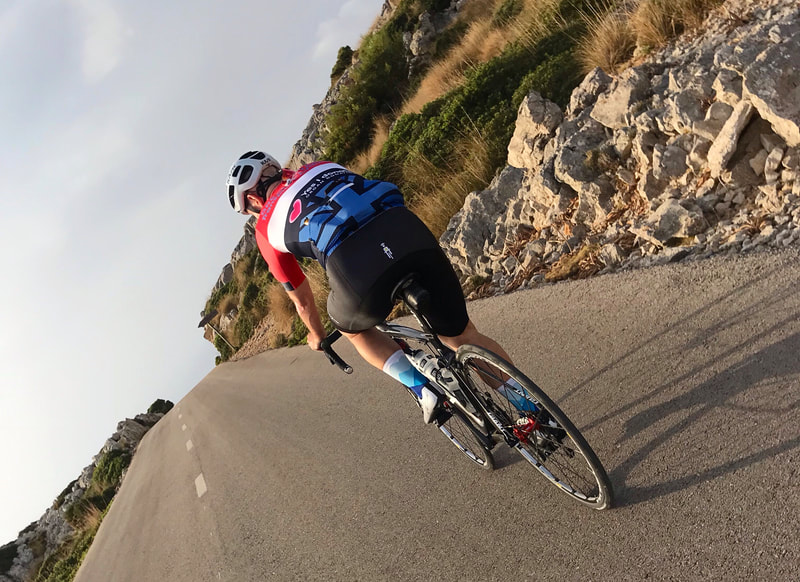
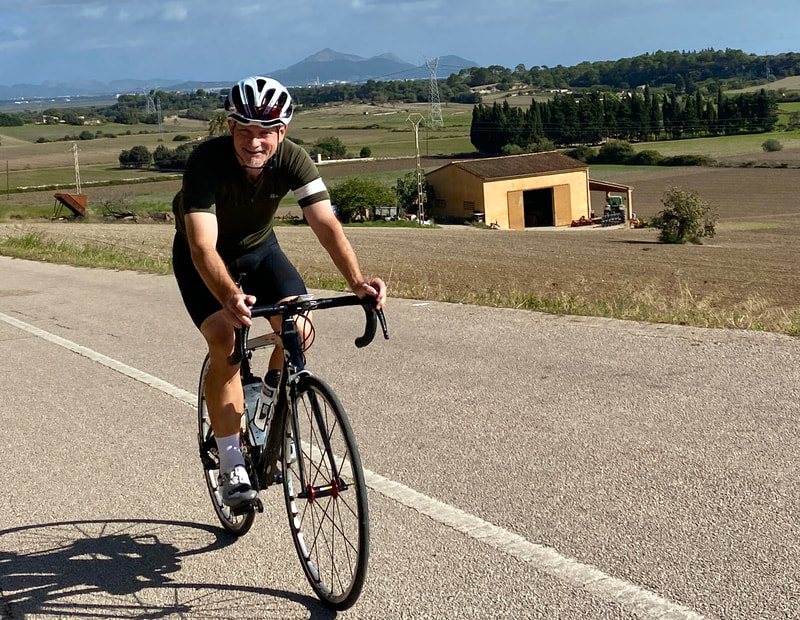
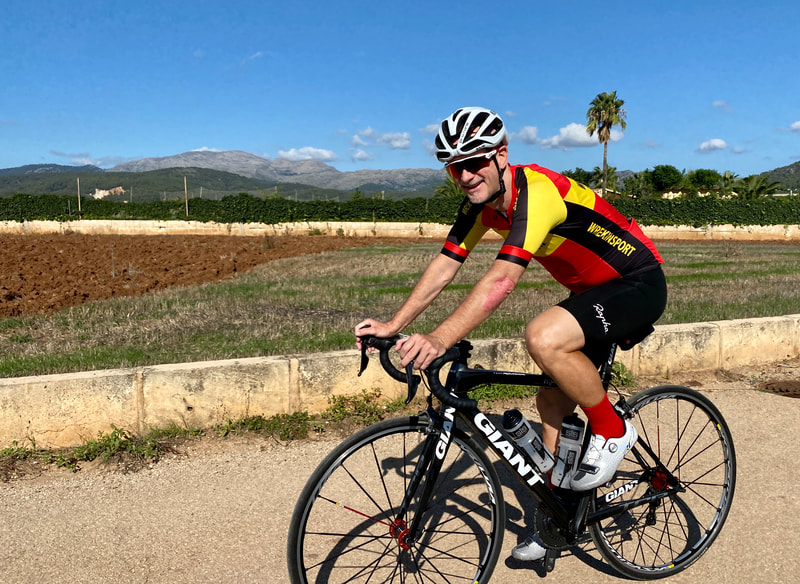
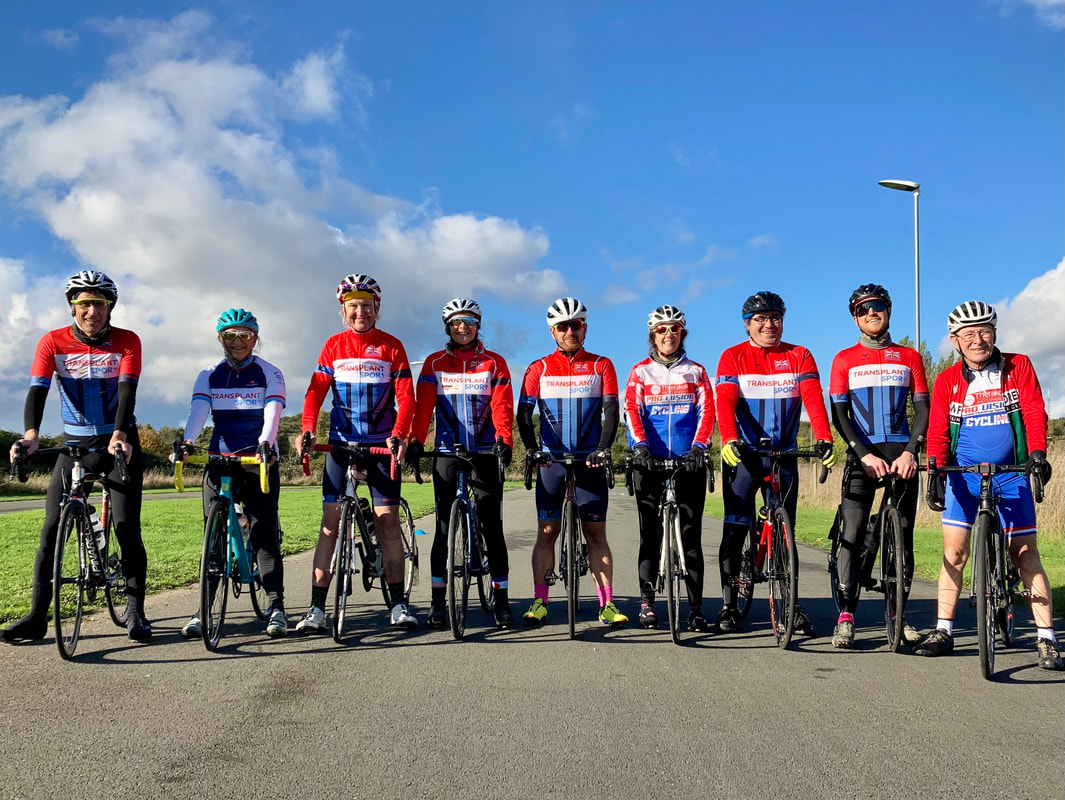
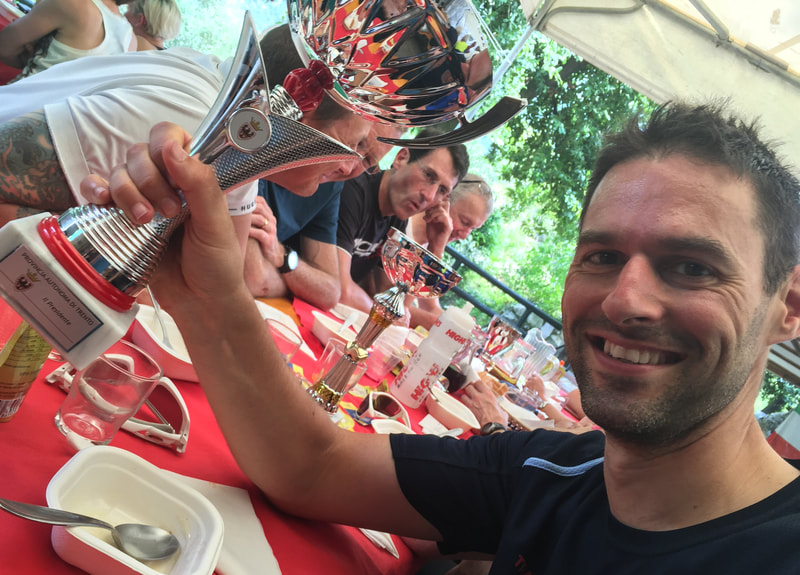
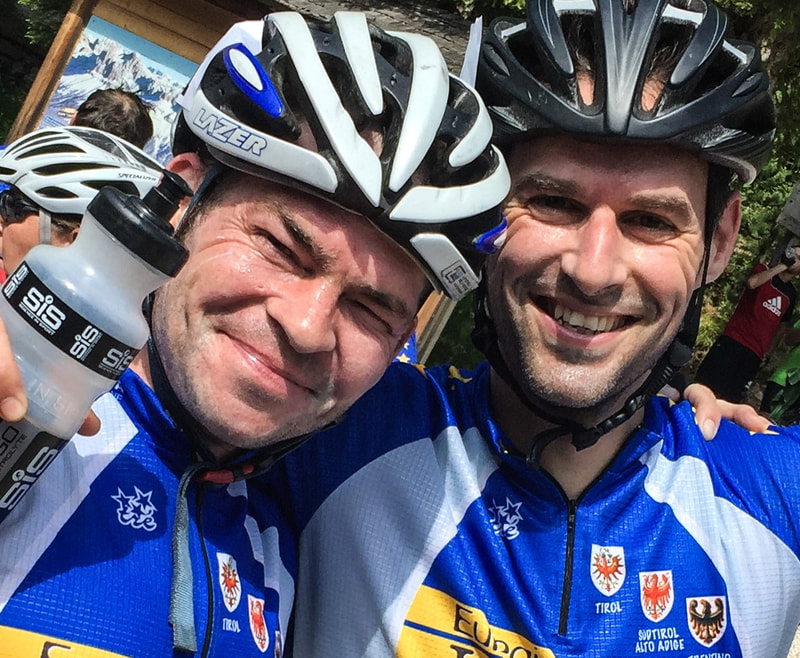
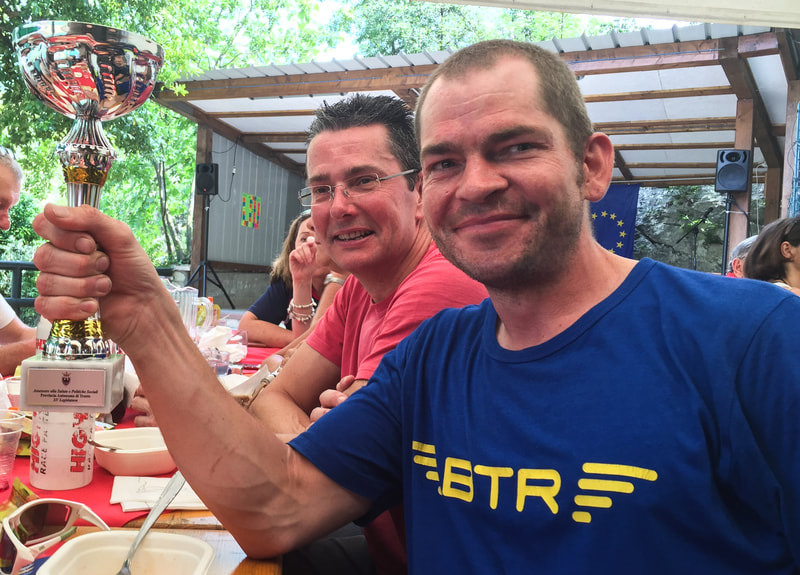
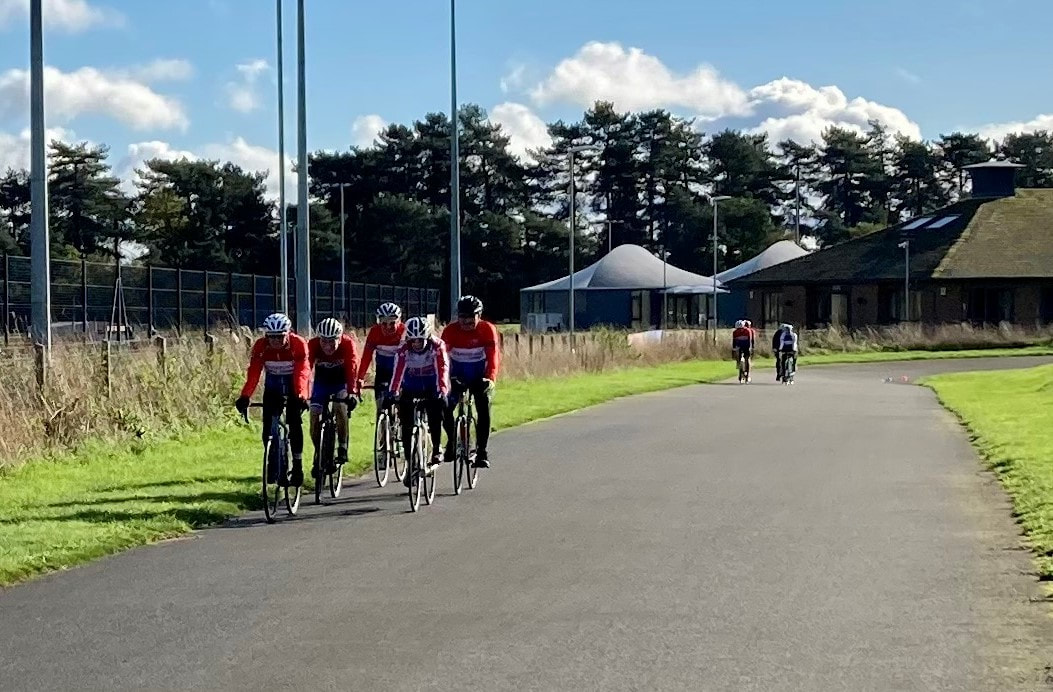
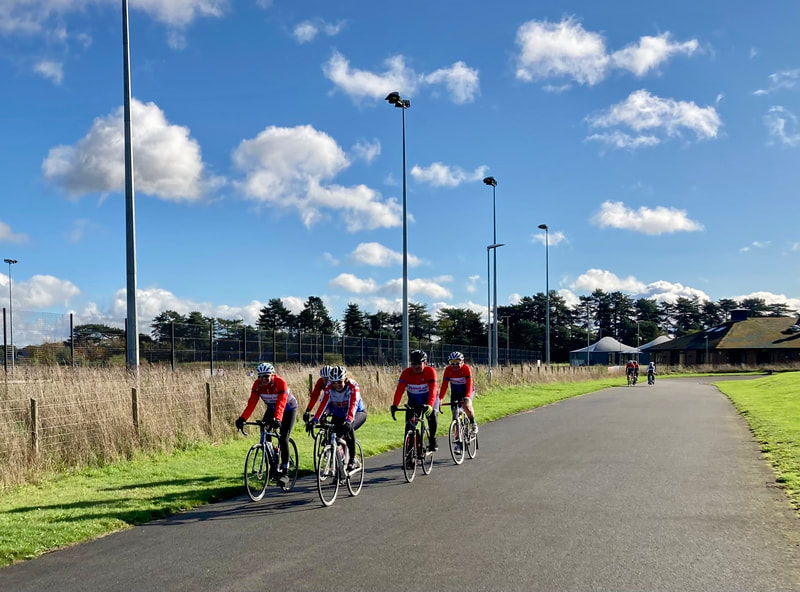
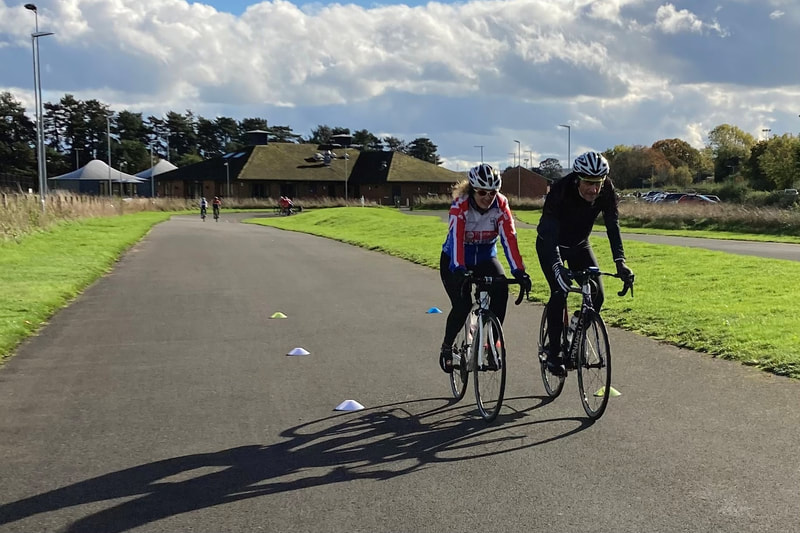
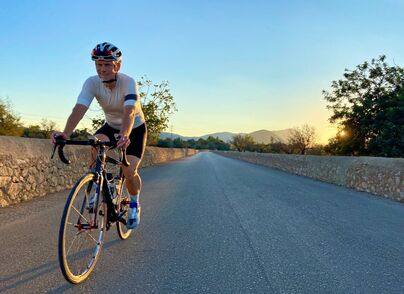
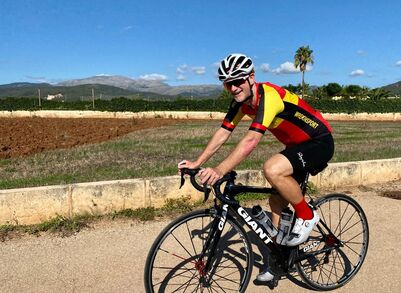
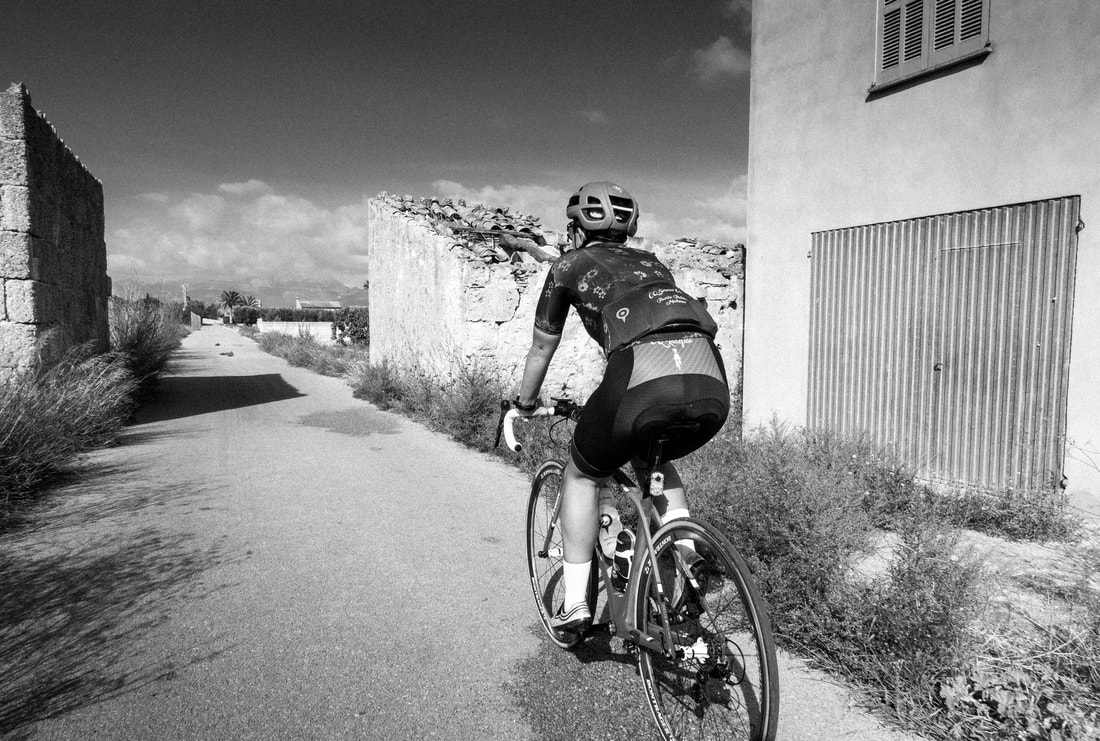
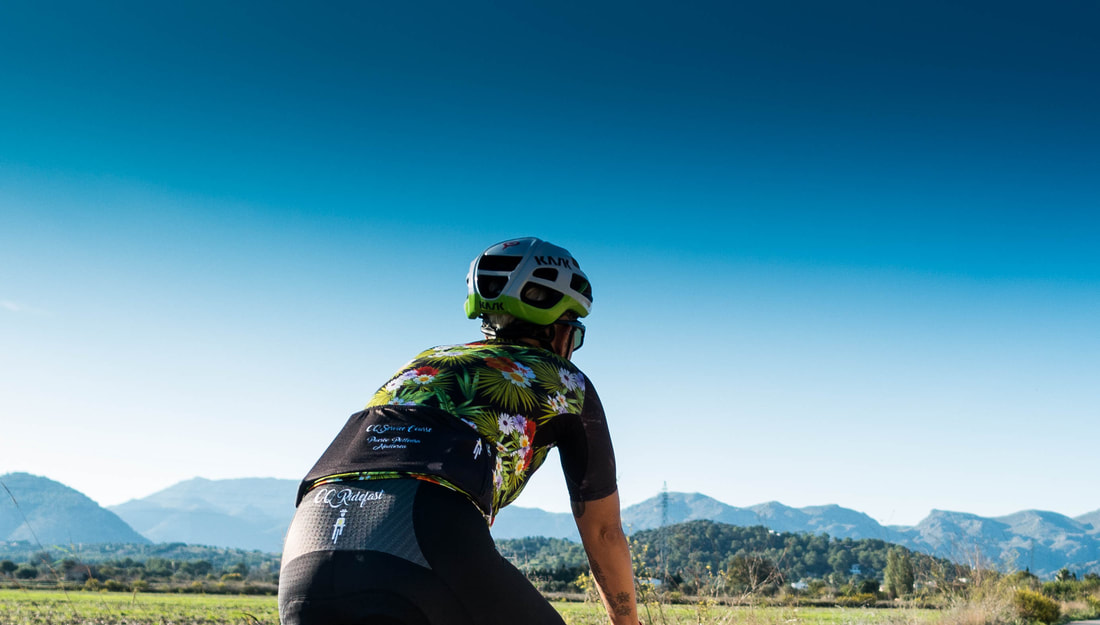
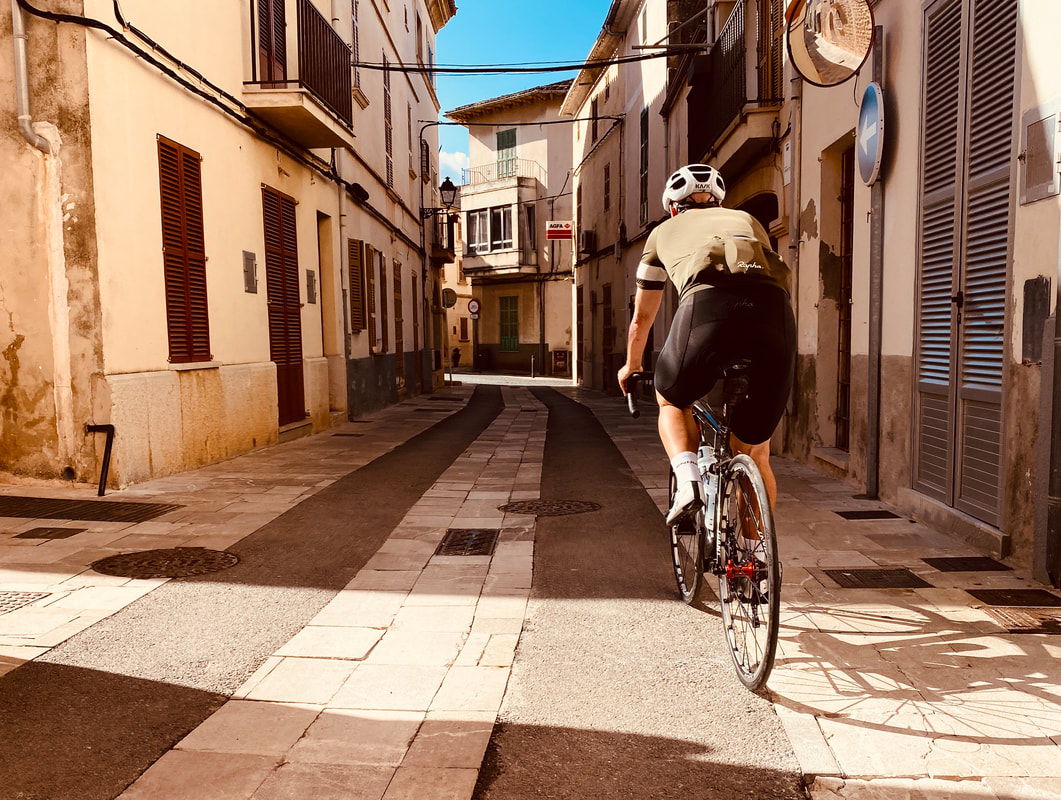
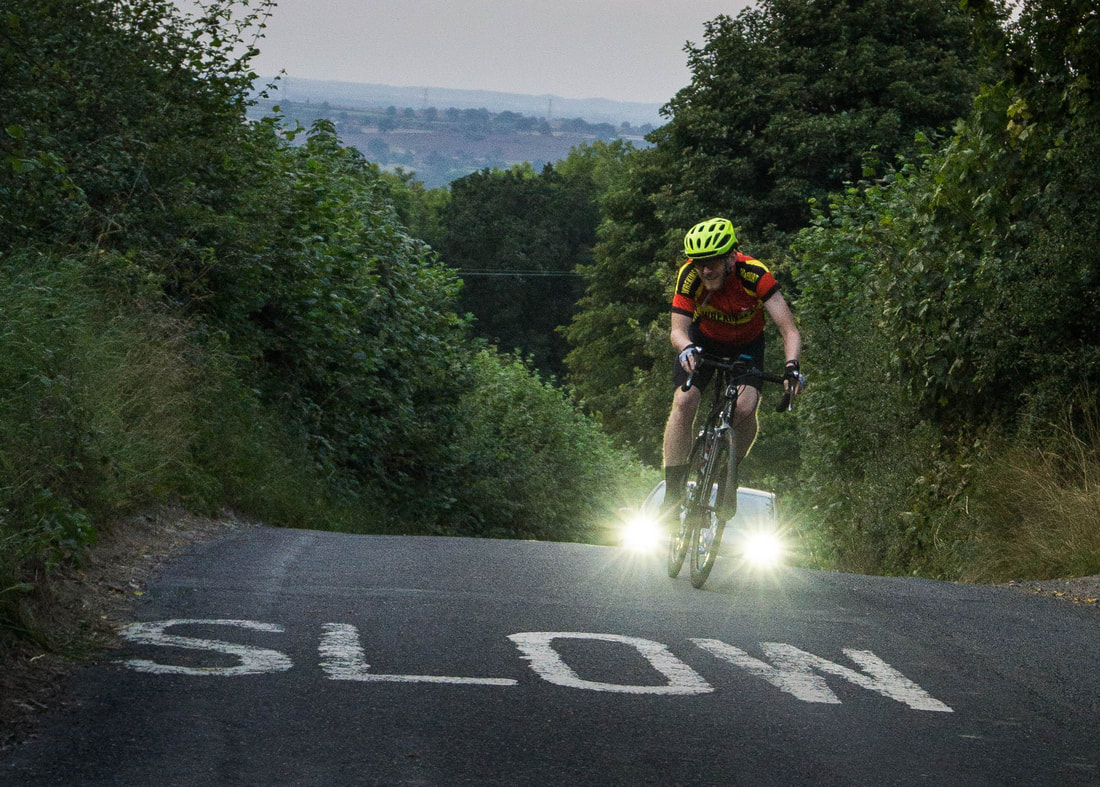
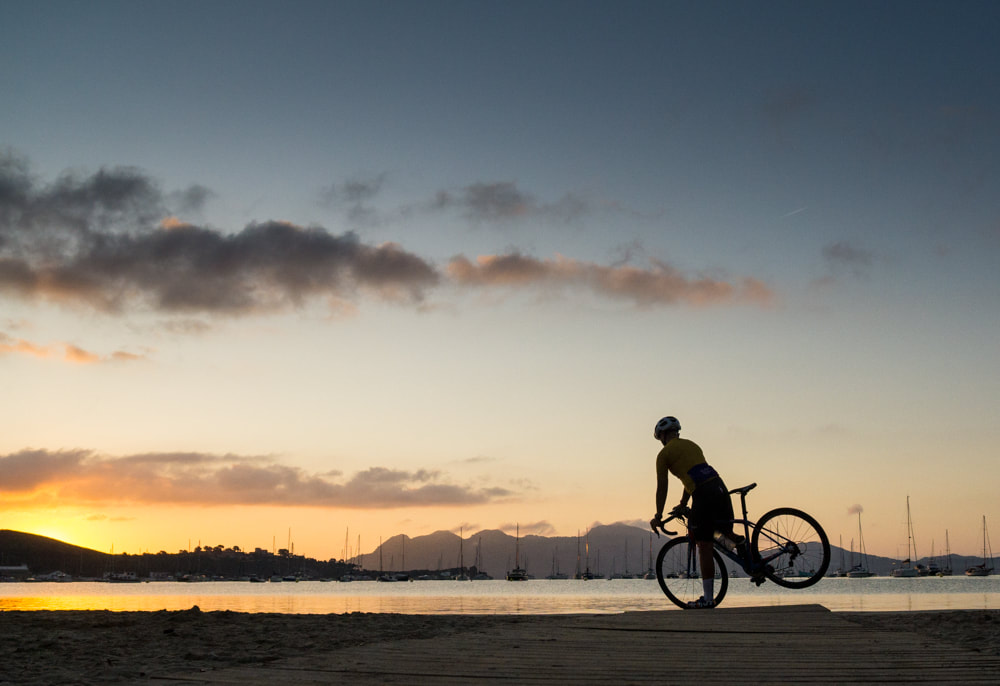
 RSS Feed
RSS Feed
